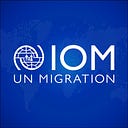Will the COVID-19 pandemic prompt action on remittances?
The article was written by Chris Richter, Migration Policy Officer at IOM’s Office to the United Nations
Migrant remittances have received extensive attention in global policy discussions because of their potential gains to human development. Besides the immediate benefit to recipients, which can range from meeting essential day-to-day needs to supporting long-term health, education and housing, their potential multiplier effects on broader economic activity and growth are substantial.[1]
Add to this the fact that the scale of remittances worldwide has exceeded that of foreign direct investment and overseas development assistance (ODA), and it is easy to see why policy makers have taken a keen interest in remittances’ potential role in poverty eradication. However, a decline in remittance flows resulting from COVID-19-related lockdowns has raised concerns about the impacts on vulnerable families, leading to questions about whether governments might finally take action to unleash remittances’ development impacts.
Governments have committed numerous times to strengthen the impact of migrant remittances on sustainable development. In 1994, at the International Conference on Population and Development, United Nations (UN) member states produced an agreement outlining several measures to leverage the benefits of remittances. These included commitments to improve “exchange rate, monetary and economic policies, facilitate the provision of banking facilities that enable the safe and timely transfer of migrants’ funds, and promote the conditions necessary to increase domestic savings and channel them into productive investment.”[2]
In 2014, G20 countries also took up the issue, creating a process to reduce the global average cost of transferring remittances and improve the availability of remittance services, amongst other targets. More recently, a flurry of agreements, notably the 2030 Agenda for Sustainable Development, the Addis Ababa Action Agenda and the Global Compact for safe, orderly and regular migration, have also produced commitments on the issue. These have similarly focused on reducing the costs of sending and receiving remittances worldwide; the latter includes a range of other measures to promote migrants’ financial inclusion.
However, despite this interest and the regularity with which governments have committed to enhance the development potential of remittances, it is unclear that the level of action has kept pace with ambitions. For example, although the World Bank has reported a slight decline in the average cost or remittances worldwide (from 6.9 percent in 2019 to 6.8 percent in the first quarter of 2020), this figure is still significantly above governments’ stated objective of getting costs below 3 percent.[3]
The COVID-19 pandemic has again drawn the issue of migrant remittances to the forefront of governments’ consideration. It is expected that the economic fallout of the pandemic will include a 20 percent decline in the value of remittances, from $554 billion in 2019 to $445 billion in 2020.[4] While the ongoing crisis makes it difficult to know exactly what the implications of this drop might be, the potential is there to push hundreds of thousands of people, perhaps millions, into poverty.[5]
The decline could have particular impacts on communities in which remittances represent a significant portion of income.[6] The International Organization for Migration has suggested that “smaller countries with high levels of emigration are particularly vulnerable, with remittances accounting for, for example, 30% and 20% of GDP in Nepal and El Salvador respectively”.[7]
These possible impacts have prompted several governments to revisit the issue. At the end of May, Canada and Jamaica jointly kicked off a process with the UN Secretary-General on Financing for Development in the Era of COVID-19 and Beyond.[8] While focused on the full range of financial tools needed to respond to the economic impacts of the pandemic, the process includes discussions on remittances and has produced several policy options to enhance their role in COVID-19 recovery.
While some of these recommendations are new, reflecting the changed circumstances of the pandemic (such as declaring remittance services ‘essential’ and waiving taxes on remittance transactions), others restate commitments already made (such as further reducing transfer costs and promoting financial inclusion of remittance recipients).
This process will culminate in a meeting of Heads of State and Government on September 29, part of the UN’s annual General Assembly discussions. The stated objective of the meeting is to “consider the menu of policy options developed over the last four months with the ambition of supporting Member States in responding and recovering from the current global crisis”.
While the menu of policy options is not a negotiated document, it could offer governments practical ideas to move forward with the numerous commitments they’ve already made over the years. This may set the initiative apart from past efforts. But the proof, as always, will be in the implementation.
As is the case in many other areas of social, economic and environmental development, the COVID-19 pandemic is not only an impetus, but also an opportunity to make tangible progress against global development commitments. The scale of the crisis however, demands more than just talk. While incorporating the issue of migrant remittances in global processes is important, we will be no better off after the pandemic if those processes result only in restatements of existing commitments. As the UN Secretary-General has noted of the COVID-19 response, ‘this moment demands coordinated, decisive and innovative policy action.’[9]
[1] OECD, 2006, ‘International Migrant Remittances and their Role in Development’, International Migration Outlook 2006, Paris.
[2] United Nations, 1994, Programme of Action adopted at the International Conference on Population and Development Cairo, 5–13 September 1994.
[3] World Bank, 2020, ‘COVID-19 crisis through a migration lens’, Migration and Development Brief 32, Washington DC.
[4] World Bank, 2020.
[5] Michael Clemens, 2020, ‘Migrant Remittances Will Plummet. Here Is What That Means for Global Development’, Centre for Global Development, https://www.cgdev.org/blog/migrant-remittances-will-plummet-here-what-means-global-development.
[6] International Organization for Migration, 2020, ‘Migration-related socioeconomic impacts of COVID-19 on developing countries’, COVID-19 response issue brief, Geneva.
[7] IOM, 2020.
[8] https://www.un.org/en/coronavirus/financing-development.
[9] United Nations, 2020, ‘Shared responsibility, global solidarity: responding to the socio-economic impacts of COVID-19’, Report of the Secretary-General, New York.
